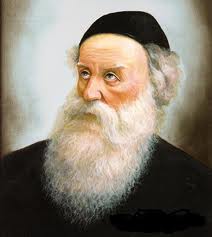

Upshernish information from Chabad.org
What Is Done?
As mentioned, it is customary to hold or at least start the upsherinish in a holy setting, in a synagogue or a house of study. Both the mother and father should be present at the upsherinish. In addition, relatives and friends of the family are invited to participate, for it is customary to hold the celebration with many people, recalling the verse:1 “The glory of the King is among the multitude of people.”2
The child should wear tzitzis for this ceremony.3 A person of spiritual stature is asked to be the first to snip off a lock of the child’s hair. On one occasion,4 the Rebbe advised that the first person to cut the hair should be a kohen, then a levi, and then, a yisrael. Afterwards, each of the people in attendance may be given a turn.5
(It is not necessary to finish cutting the child’s hair at the upsherinish. A portion can be cut off there and the remainder cut off at home or by a barber. One should not, however, employ a gentile barber for this purpose.6)
The Rebbe would begin by cutting the hair near the peyos, close to the child’s ear. The rationale appears that since the purpose of the custom is to train the child to observe the mitzvah of not shaving his peyos, the cutting should begin there.7
The hair should be collected and buried, rather than thrown in the garbage. The Minchas Elazar would weigh the hairs and give an equivalent amount of coins to charity.8
Based on a letter from the Rebbe’s father,9 there are many who follow the practice of giving the child whose hair is being cut money to give to tzedakah. In that letter, the Rebbe’s father draws a parallel to the custom of giving Chanukah gelt.
At the ceremony, the child whose hair is being cut should recite the verse Torah Tzivah. There are many who have the other children in attendance complete the recitation of the twelve pesukim selected by the Rebbe.
Some mark the occasion with a celebratory feast. At the very least, pastry and L’Chayims10 should be served. The child should be given an opportunity to recite blessings. Many enhance the celebration with song and music.11
FOOTNOTES
1.
Proverbs 14:28. We have translated the verse according to its exegetical context in Berachos 53a, et al.
2.
Shaarei Teshuvah 531:7.
3.
An association is drawn between this mitzvah and this practice because locks of hair are also referred to as tzitzis. As mentioned on page 12, from the time of the upsherinish onward, a child should continue observing the mitzvah of tzitzis in a consistent manner.
4.
In a directive given to Rabbi Yitzchak David Groner.
5.
There is no difficulty with giving women a chance to participate in this practice (see Kores Itim, pp. 69-70; Ziv Minhagim, p. 105). (Needless to say, the men and the women should not mix, but the child may be brought to the place where the women are congregating so that they can also cut off a portion of his hair.) Indeed, certain authorities advise the mother to cut off some hair. Since she has a responsibility in educating the child, she should take part in the ceremony initiating his education.
6.
S’dei Chemed, Asifas Dinim, Chol HaMoed, sec. 5).
7.
Others including the Skleneler Rebbe and the chassid, R. Itchah, the Masmid, would begin cutting at the place where ultimately the child would put on tefillin.
8.
Segulos Yisrael, Maereches Gimmel, sec. 25.
9.
Likkutei Levi Yitzchak, Igros, p. 355.
10.
Traditional Jewish toasts for good fortune.
11.
See Shaarei Yerushalayim, p. 47.
|

What Words Offend Arabs? The Truth.
Children's Poetry Booklet Recalled After Arabs Complain
(Israeli censorship kowtows to Arabs.
When Will We Tell The Truth Without Fear)
(IsraelNN.com 7 Sivan 5768/June 10, '08) Ynet's web site and Arab complaints against a ten-year-old boy's poem about terrorists has resulted in the recall of all of the Nes Ziona municipality's children's poetry booklets.
Ynet boasts that its coverage of the poem resulted in its being recalled.
The text of the poem (Ynet's translation):
Ahmed's bunker has surprises galore: Grenades, rifles are hung on the wall. Ahmed is planning another bombing!What a bunker Ahmed has, who causes daily harm.Ahmed knows how to make a bomb. Ahmed is Ahmed, that's who he is, so don't forget to be careful of him.We get blasted while they have a blast!Ahmed and his friends could be wealthy and sunny, if only they wouldn't buy rockets with all their money.
Poetry competition director Marika Berkowitz, who published the booklet, was surprised at the protests and told Ynet: "This is the boy's creation and this is what he wanted to express. Of course there should be a limit, but I think the there is no racism here. 'Ahmed' is a general term for the enemy. These are the murmurings of an innocent child."
The Education Ministry told Ynet: "The local authority that published the booklet should have guided the students in a more correct manner through the schools. The district will investigate the issue with the local authorities."











0 comments:
Post a Comment